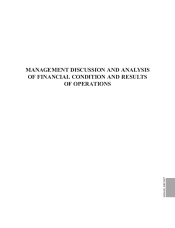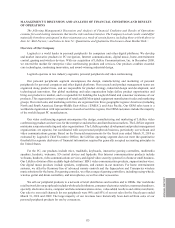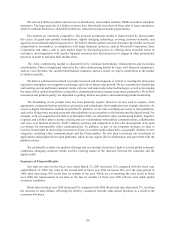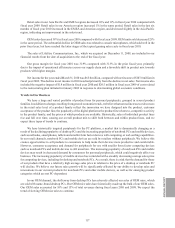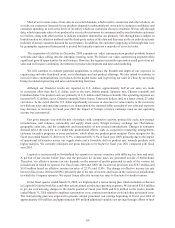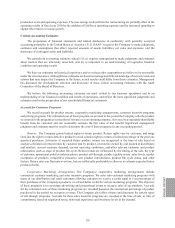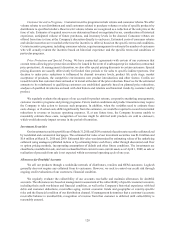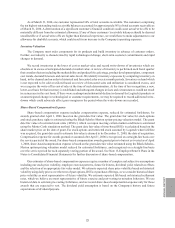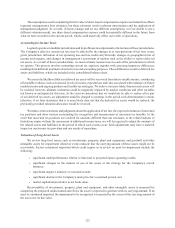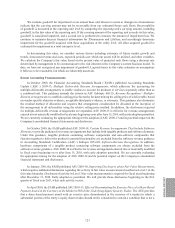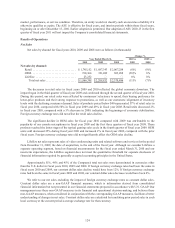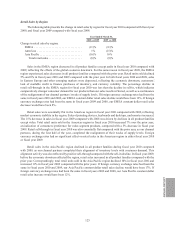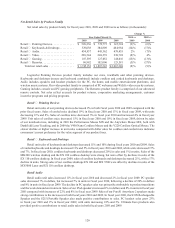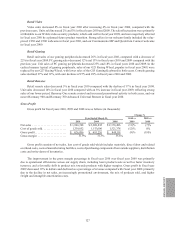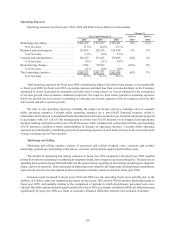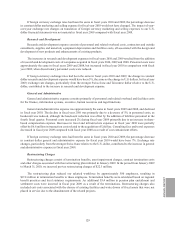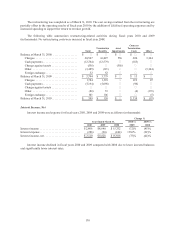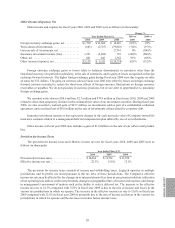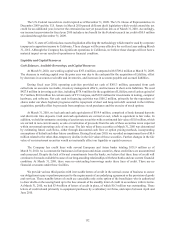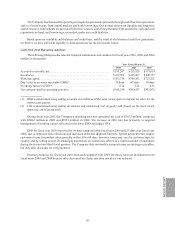Logitech 2010 Annual Report Download - page 135
Download and view the complete annual report
Please find page 135 of the 2010 Logitech annual report below. You can navigate through the pages in the report by either clicking on the pages listed below, or by using the keyword search tool below to find specific information within the annual report.
123
ANNUAl REPORT
We evaluate goodwill for impairment on an annual basis and whenever events or changes in circumstances
indicate that the carrying amount may not be recoverable from our estimated future cash flows. Recoverability
of goodwill is measured at the reporting unit level by comparing the reporting unit’s carrying amount, including
goodwill, to the fair value of the reporting unit. If the carrying amount of the reporting unit exceeds its fair value,
goodwill is considered impaired, and a second test is performed to measure the amount of impairment loss. We
continue to maintain discrete financial information for 3Dconnexion and LifeSize, and accordingly determine
impairment for the goodwill acquired with these acquisitions at the entity level. All other acquired goodwill is
evaluated for impairment at a total enterprise level.
In determining fair value, we consider various factors including estimates of future market growth and
trends, forecasted revenue and costs, expected periods over which our assets will be utilized, and other variables.
We calculate the Company’s fair value based on the present value of projected cash flows using a discount rate
determined by management to be commensurate to the risk inherent in the Company’s current business model. To
date, we have not recognized any impairment of goodwill. Logitech bases its fair value estimates on assumptions
it believes to be reasonable, but which are inherently uncertain.
Recent Accounting Pronouncements
In October 2009, the Financial Accounting Standards Board (“FASB”) published Accounting Standards
Update (“ASU”) 2009-13, Multiple Deliverable Revenue Arrangements, which addresses the accounting for
multiple-deliverable arrangements to enable vendors to account for products or services separately rather than as
a combined unit. This guidance amends the criteria in ASC Subtopic 605-25, Revenue Recognition—Multiple-
Element Arrangements, to establish a selling price hierarchy for determining the selling price of a deliverable, based
on vendor specific objective evidence, acceptable third party evidence, or estimates. This guidance also eliminates
the residual method of allocation and requires that arrangement consideration be allocated at the inception of
the arrangement to all deliverables using the relative selling price method. In addition, the disclosures required
for multiple-deliverable revenue arrangements are expanded. ASU 2009-13 is effective for revenue arrangements
entered into or materially modified in fiscal years beginning on or after June 15, 2010, with early adoption permitted.
We are currently evaluating the appropriate timing for the adoption of ASU 2009-13 and its potential impact on the
Company’s consolidated financial statements and disclosures.
In October 2009, the FASB published ASU 2009-14, Certain Revenue Arrangements That Include Software
Elements, to provide guidance for revenue arrangements that include both tangible products and software elements.
Under this guidance, tangible products containing software components and non-software components that
function together to deliver the product’s essential functionality are excluded from the software revenue guidance
in Accounting Standards Codification (“ASC”) Subtopic 985-605, Software-Revenue Recognition. In addition,
hardware components of a tangible product containing software components are always excluded from the
software revenue guidance. ASU 2009-14 is effective for revenue arrangements entered into or materially modified
in fiscal years beginning on or after June 15, 2010, with early adoption permitted. We are currently evaluating
the appropriate timing for the adoption of ASU 2009-14 and its potential impact on the Company’s consolidated
financial statements and disclosures.
In January 2010, the FASB published ASU 2010-06, Improving Disclosures about Fair Value Measurement,
which requires additional disclosures regarding the activity in fair value measurements classified as Level 3 in the
fair value hierarchy. Disclosure of activity in Level 3 fair value measurements is required for fiscal years beginning
after December 15, 2010. Early adoption is permitted. We will provide these disclosures beginning in the first
quarter of fiscal year 2011, when such activity occurs.
In April 2010, the FASB published ASU 2010-13, Effect of Denominating the Exercise Price of a Share-Based
Payment Award in the Currency of the Market in Which the Underlying Equity Security Trades. The ASU provides
that a share-based payment award with an exercise price denominated in the currency of a market in which a
substantial portion of the entity’s equity shares trades should not be considered to contain a condition that is not a


